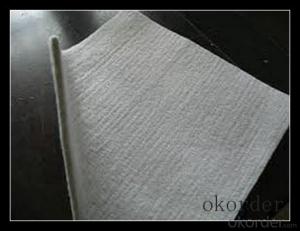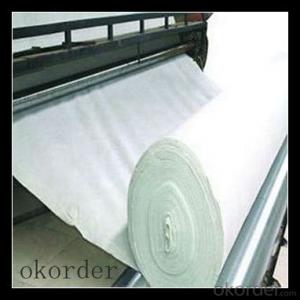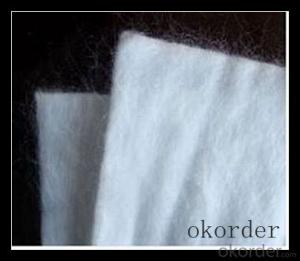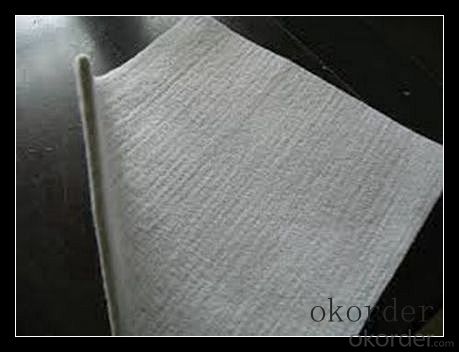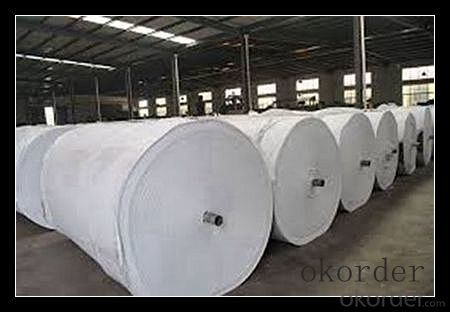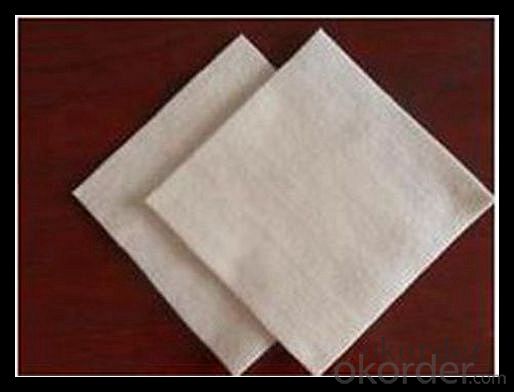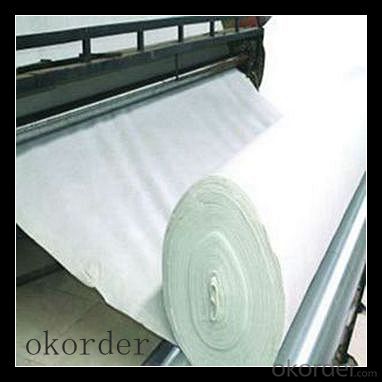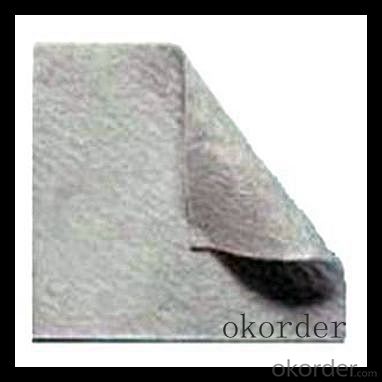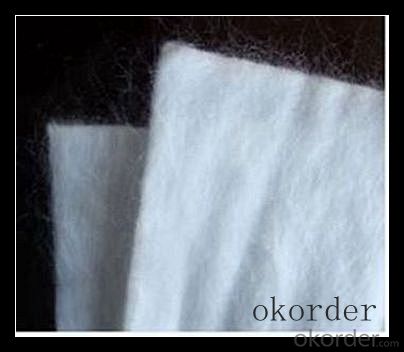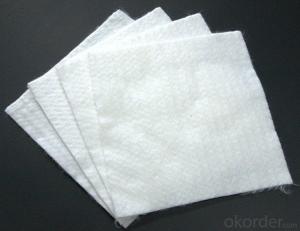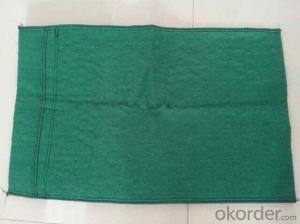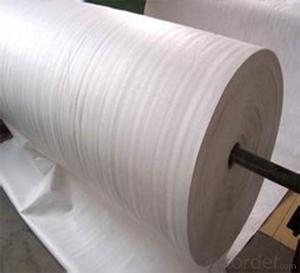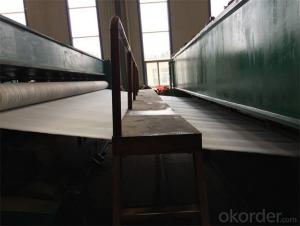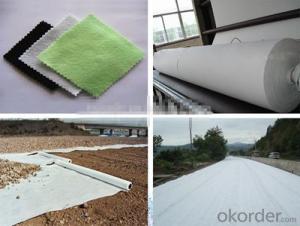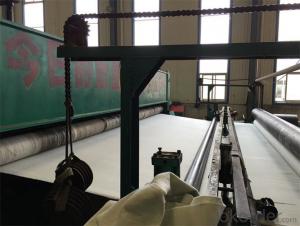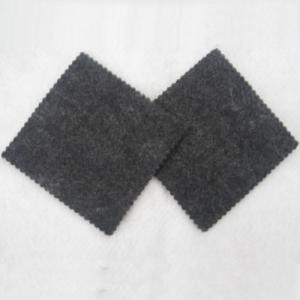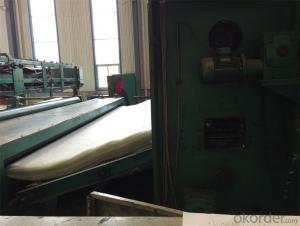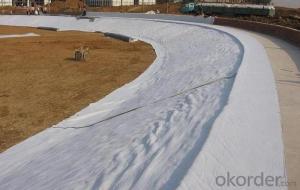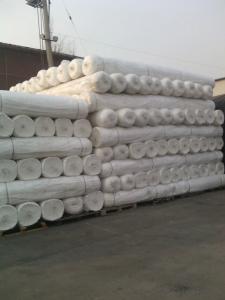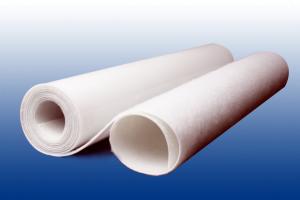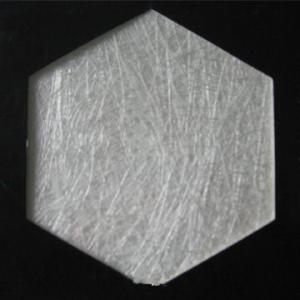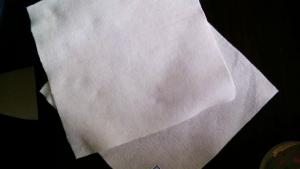100% Polyester Filament Woven Geotextile Fabric Products
- Loading Port:
- China main port
- Payment Terms:
- TT OR LC
- Min Order Qty:
- 1000 m²
- Supply Capability:
- 1000000 m²/month
OKorder Service Pledge
OKorder Financial Service
You Might Also Like
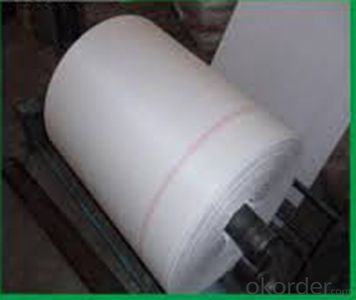
Geotextile Specifications
1) Weight / Mass: 100g/m2-1500g/m2
2) Width: Within 8 m (1m-8m)
3) Length: 50m-100m/roll (as request)
4) Material: PP / PET
Features and Benefits
Geotextiles are made from either polypropylene or polyester and geotextile fabrics come in three basic forms: woven, needle punched (resembling felt), or heat bonded (resembling ironed felt). In Australia the most popular geotextile used is the polyester needle punched fabric, as the polyester is more UV stable than the polypropylene material.
Our Service
1.On a regular basis or as per your request,we entrust national testing agencies to conduct quality inspections
2. Strictly in accordance with the ISO9001-2008 international quality system standard,we monitor and manage the whole process throughout production,quality testing,and measurement to ensure product quality
3. For quality-related construction delay or substandard construction(except for damage or losses due to customer’s responsibility or irresistible natural disasters),we have refunding,replacement,and repair services.We will respond to customers’ feedbacks on quality issues within 24 hours.
FAQ:
Q: What kind of payments does jenor support?
A: T/T, L/C, Cash are accepted.
Q: Do you charge for the samples?
A: Accordeing to our company policy, the samples are free, we only charge the freight fee. And we will return the freight fee during the next order.
Q: Can you produce according to customers' design?
A: Sure, we are professional manufacturer, OEM and ODM are both welcome.
Q: Do you have other products?
A: Yes, please check the pictures:
- Q: Do you have a drainage board and a geotextile on the basement roof?
- Hello, generally do not require re-test Huazhi geotextile materials, manufacturers need to answer for your needs
- Q: What are the specifications for geotextiles in roadways?
- The specifications for geotextiles in roadways usually include factors such as tensile strength, puncture resistance, filtration properties, and durability. Geotextiles used in roadways should have a high tensile strength to withstand the stress and strain exerted by traffic and construction activities. They should also have good puncture resistance to prevent damage from sharp objects. The filtration properties of geotextiles are important for preventing the migration of fine particles and maintaining the stability of the road structure. Additionally, geotextiles should be durable and resistant to degradation caused by UV exposure, chemicals, and biological factors.
- Q: How do geotextiles help in preventing erosion around culverts?
- Geotextiles help in preventing erosion around culverts by acting as a barrier between the soil and water flow. They provide stability and reinforcement to the soil, preventing it from being washed away. Additionally, geotextiles help filter out sediment and prevent clogging of the culvert, ensuring proper water flow and reducing the risk of erosion.
- Q: What are the key considerations for geotextile installation in corrosive environments?
- Some key considerations for geotextile installation in corrosive environments include selecting a geotextile material that is resistant to corrosion, ensuring proper installation techniques to prevent exposure of the geotextile to corrosive substances, and monitoring the condition of the geotextile regularly to detect any signs of corrosion or degradation. Additionally, it is important to consider the potential impact of the corrosive environment on the overall performance and lifespan of the geotextile.
- Q: It is best to take a picture
- Paved on the line, lap welding or with glue. The company specializes in producing geothermal geotextile, detailed advice, please see my information
- Q: Are geotextiles resistant to insect infestation?
- Yes, geotextiles are generally resistant to insect infestation. Their synthetic material and tightly woven structure make it difficult for insects to penetrate or nest within the fabric. However, it is important to note that while geotextiles provide a barrier against insects, they are not completely immune to all types of infestation.
- Q: Can the geotextile function be a filter?
- Hello, geotextile is the most important role is to filter, some of the above works of water filter material is mainly used geotextile, geotextile price is relatively low, relatively high tensile strength, can play a filtering effect. Zhongrui geotech Zhang Mingchao answer for you.
- Q: Do geotextiles and geogrids do check-in?
- Required, geotextile and geogrid material is qualified. But actually depends on the situation to set.
- Q: Do geotextiles affect soil pH levels?
- No, geotextiles do not affect soil pH levels.
- Q: Can geotextiles be used in geosynthetic clay liner caps?
- Yes, geotextiles can be used in geosynthetic clay liner caps. Geotextiles are often used as a protective barrier or separator in geosynthetic clay liner systems to enhance their performance and prevent clogging or migration of fine particles.
Send your message to us
100% Polyester Filament Woven Geotextile Fabric Products
- Loading Port:
- China main port
- Payment Terms:
- TT OR LC
- Min Order Qty:
- 1000 m²
- Supply Capability:
- 1000000 m²/month
OKorder Service Pledge
OKorder Financial Service
Similar products
Hot products
Hot Searches
Related keywords
